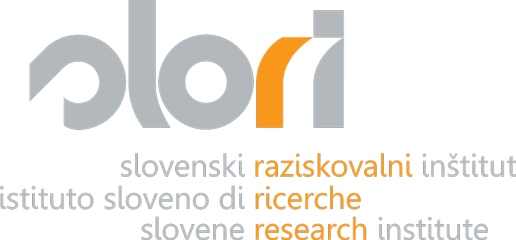Project in the frame of the Community initiative programme Interreg IIIA Italy – Slovenia 2000-2006
Project promoter: SLORI- Slovene Research Institute
Project performer: SLORI- Slovene Research Institute
Project implementation period: 2006-2007
The project MI. MA. »Majorities Know the Minorities« was carried out in 2006 and 2007 by the Slovene Research Institute – Slovenski raziskovalni inštitut – SLORI in Italy and the Italian Union – Unione Italiana in Slovenia and Croatia. The project partners are the Coastal Self-Governing
Community of the Italian Nationality – Comunità Autogestita Costiera della Nazionalità Italiana and the Italian Centre for Promotion, Culture, Education and Development »Carlo Combi« – Centro italiano di promozione, cultura, formazione e sviluppo »Carlo Combi« in Slovenia and the Slovene Cultural – Economic Union – Slovenska kulturno-gospodarska zveza (SKGZ), the Council of the Slovene Organisations – Svet slovenskih organizacij (SSO) and the Association of the Friends of the Newspaper Isonzo/Soča – Združenje prijateljev časopisa Isonzo / Soča in Italy.
The project was developed in the frame of the Community Initiative Programme Interreg IIIA Italy-Slovenia 2000-2006 and was already carried out for the first time in the period 2004/2005. It arose from a very close cooperation between the Italian national community in Slovenia and the Slovene national community in Italy. The main idea was to foster cooperation between the two neighboring countries, especially in those sectors where the continuous confrontation between the two coexisting autochthonous communities and a wider knowledge about them among the majority population was considered necessary.
The aim of the project was to raise awareness particularly among young people about the presence of the autochthonous minorities living in the border areas between Italy, Slovenia and Croatia. Through educational and informative activities the project has stimulated within the young generations of the majority population in the Slovene- Italian border area the knowledge of the Slovenes in Italy and of the Italians in Slovenia and Croatia.
Between October 2006 and June 2007, 42 presentations of both the minorities in the majority secondary schools and universities were carried out: in the Slovene ones in Slovenia (in the Municipalities of Koper / Capodistria, Izola / Isola and Piran / Pirano) and in the Italian ones in Italy (in the Provinces of Gorizia / Gorica, Trieste / Trst and Udine / Viden), where the Italian and the Slovene national community live. The presentations were attended by more than 1,000 young participants. At the end of the presentations the young attendees filled out a questionnaire for the evaluation of the contents and the methods used during the presentation, and for determining their knowledge of the minorities. The promotion of the minorities and their languages has also been at the core of some technical meetings, attended by researchers on the border area between Slovenia and Italy. The presentation of the Slovene national community in Italy and of the Italian national community in Slovenia and Croatia is finally available on-line on www.slori.org/mima and www.unione.italiana.hr in Slovene, Italian and English.
The project MI.MA. »Majorities Know the Minorities« has not only improved the knowledge of both the minority communities but also about the multicultural and multiethnic coexistence in the linguistic and cultural contact areas between Italy, Slovenia and Croatia.
– The overall objective, to promote peaceful coexistence between the majority and the minority population in the Provinces of Gorizia / Gorica, Trieste / Trst and Udine / Viden in the Region Friuli Venezia Giulia and in the Municipalities of Piran / Pirano, Izola / Isola and Koper / Capodistria in Slovenia, was fulfilled.
– The project developed and added new methods for the promotion of the minorities and their languages.
– It gave concrete examples of best practices in the field of information and education in a multicultural environment.
– It boosted dialogue and cooperation between the respective educational establishments in the border area and the organizations of the Slovenes in Italy and the Italians in Slovenia and Croatia.
– It emphasized the interest of the young generations of majority population for the activities of the minority, and fostered their active participation in the events and initiatives, organized by both the minorities.
